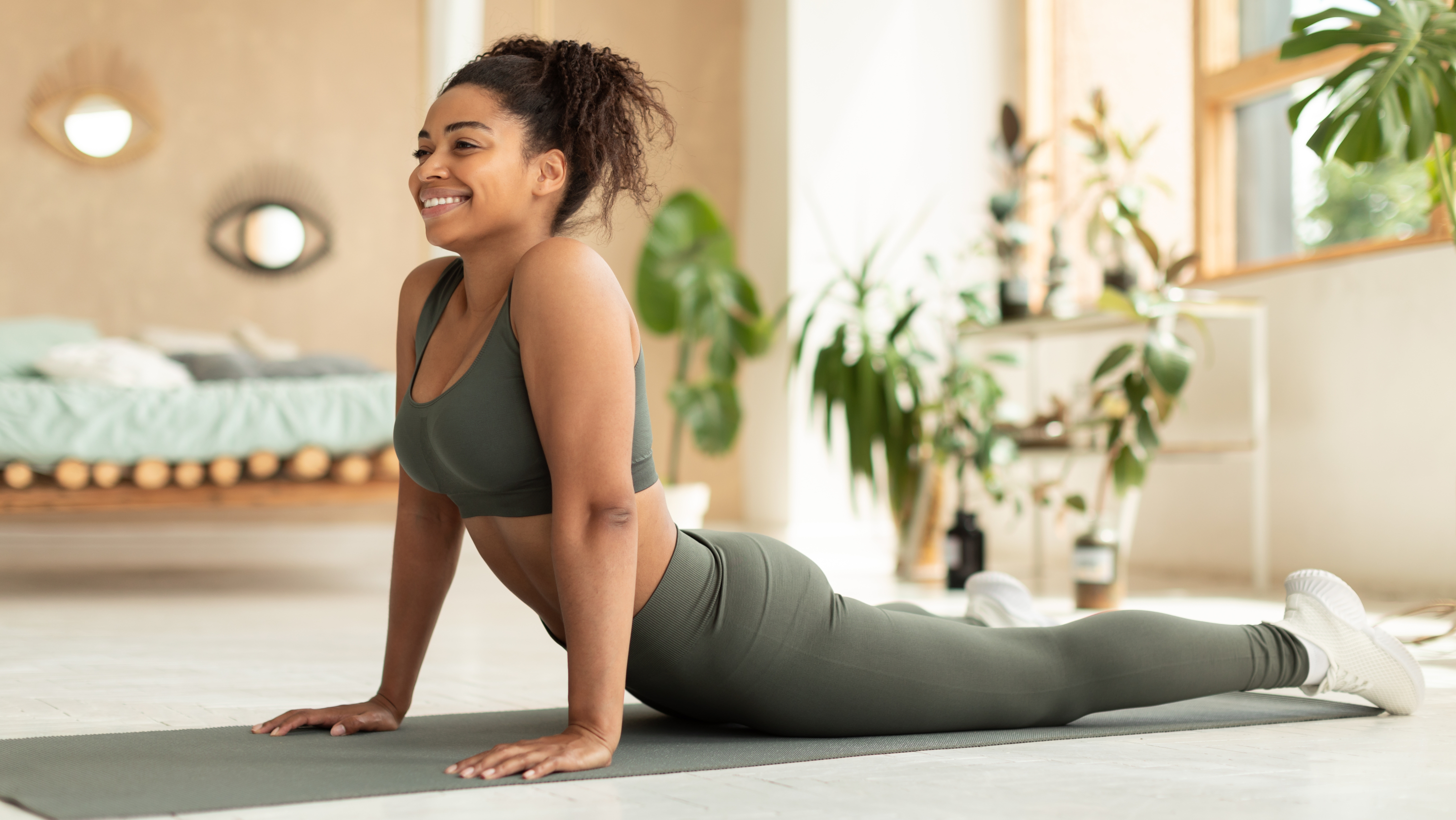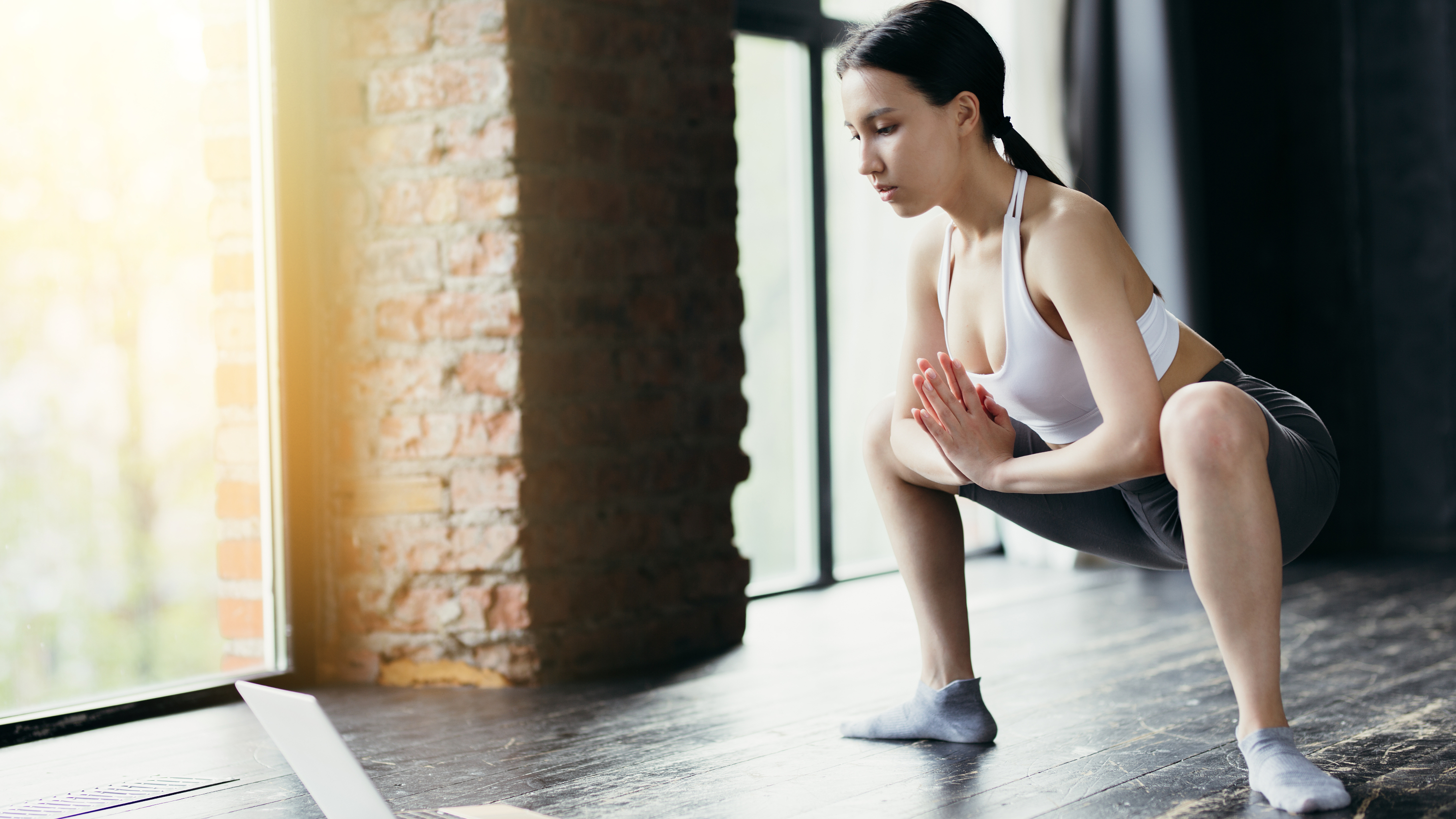
I used to religiously only work out in the mornings, whether that be a run or a workout at the gym, I’d wake up and jump straight into it. However, the recent long and cold Winter has seen me do a 180 with when I choose to work out. Until it’s above 10 degrees outside again, I’d much prefer the extra time in bed and fit in some exercise during the day or in the evening.
That being said, I have been looking to ease myself back into a habit of morning movement, but something a bit gentler than intense intervals around the track or pushing through the best barbell exercises at the gym. This is how I stumbled across a short mobility routine designed by the fitness trainer, James Stirling, also known as the London Fitness Guy.
I liked that this mobility session only took six minutes yet the movement would hopefully help awaken and better prepare my body for the day ahead. Here’s what I found.
What is the routine?
Stirling has strung six exercises together to form a short and simple stretch and mobility flow. Four of the moves are unilateral and require you to repeat the movement on both sides of the body. In this instance, you will spend 30 seconds on each side. Meanwhile, you will spend 60 seconds straight on the other exercises.
See below for Stirling's demonstrations of each exercise and the routine in full.
I tried a 6-minute mobility routine as soon as I woke up — here's what happened
Although this was a very low intensity form of exercise and would only take up six minutes of my time, I still made sure to change into my best gym leggings and top before starting the routine. This way I was able to separate my sleep time from the exercise and fully commit to it. I also rolled out one of the best yoga mats to ensure my joints were supported throughout the various movements.
Here's my results.
It didn’t take long to loosen up
I’m just like many others who work a 9-5 job hunched over a laptop screen all week, I don’t have wonderful posture and I quite often feel stiff or experience tension in my lower back and upper body.
As you can imagine, I wasn’t feeling too flexible when I climbed out of bed, put my exercise wear on and started stretching out on my mat. But it surprised me how my body opened up and felt like it wanted to lean into the routine with each stretch and rotation. I gradually felt tension release and my flexibility improved as I moved through the movements. So much so that when I stepped foot on the subway to commute to work, I felt much less zombie and more aware of my surroundings.
I increased my blood flow

Although I was only moving for six minutes, I could feel my muscles contract and relax and felt like the movement was helping to pump blood more efficiently throughout my body.
Often when I find myself feeling notably cold, I ask myself when the last time was that I moved my body around. Sometimes all you need is some stretching and movement to stimulate the circulatory system. I won't be limiting this mobility routine to just something I do when I wake up but also something I resort to using after sitting down for too long. Especially since improved blood flow can impact your overall energy levels.
It felt like I boosted my exercise recovery
I like to think I'm pretty good at remembering to warm up before a workout but I can't say the same when it comes to the cooldown process. Especially during my current marathon training block when all I want to do after a 19-mile session is shower, eat my weight in carbs and sprawl out on the sofa. In neglecting a post run stretch out, I often feel muscle tension and soreness the day after.
Feeling the tightness and then the release of tension during the mobility routine highlighted how much as little as six minutes of stretching can make a difference. The DOMS (delayed onset muscle soreness) didn't necessarily go away altogether after doing the routine but I felt more mobile than normal.
The American Council on Exercisesays exercise or movement in general is a function of multiple muscles working together to move your joints through their range of motion, and this relies on good levels of mobility. So when it comes to forms of exercise that involve repetitive and linear movements, like running, low intensity mobility exercise can indeed help to boost recovery.







